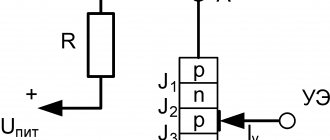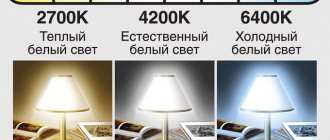Back in the 70s of the last century, scientists and researchers in the field of light began to measure and evaluate the quality of color rendering from various sources, while describing the result obtained with just one number.
This parameter or coefficient was called CRI. It also has another designation - Ra. Essentially it's the same thing.
CRI stands for Color Rendering Index - color display index.
What is CRI
It is he who is responsible for the fact that the same orange, in one case, will look quite natural, and in another will not look like itself at all. This is called natural color reproduction.
By the way, many probably remember the riddle that divided the Internet into two camps - “what color is the dress in the photo”? This index played a significant role here.
That is, coefficient. answers how natural and natural an object looks under a particular lamp or lighting. For you it may make no difference, you will still eat an orange or wear a dress, but for an artist or photographer this parameter is oh so important.
By the way, this point applies not only to the process of painting a painting, but also to its display in galleries.
It can also increase or, conversely, decrease sales in grocery stores. Not everyone wants to buy a suspicious-looking lemon or other fruit.
Although in fact the products will be absolutely ripe and healthy, the whole picture will be ruined by incorrectly chosen lighting.
In exactly the same way, supermarkets can deceive. You buy seemingly beautiful and ripe apples from a display case, bring them home, unwrap them, but they no longer look as appetizing as in the store.
They certainly could not have deteriorated in such a short period of time, but we must pay tribute to the local staff, who, unlike you, were familiar with the concept of color rendition and selection of the desired CRI.
Losev light!
Few people know that the first LED was created almost 100 years ago in the USSR.
The 2014 Nobel Prize in Physics was awarded to Japanese scientists for their breakthroughs in artificial light technology. For the creation of a low-cost blue LED, which allowed the production of white light sources for lighting. This is exactly what was missing for industrial production and mass adoption of LED lamps.
On the website of the Nobel Committee, in an article about the scientific background of the discovery by Japanese scientists, there is a short mention that the first serious research on the glow of semiconductors back in the 20s of the twentieth century was carried out by the Soviet inventor Oleg Losev.
Although it would be more correct to say this: the world’s first LED was created by the Soviet scientist Oleg Vladimirovich Losev back in the 1920s. Almost a hundred years ago! He is also the author of the world's first semiconductor amplifier. And also in his experiments, Losev was one step away from creating a transistor.
Working since the early 20s on a new type of detector for a radio receiver, Losev discovered a mysterious glow from a carborundum (silicon carbide) crystal. The most striking thing is that the glow was found not on the surface, but inside the crystal, and it was not associated with heating, that is, it was cold. There were no theoretical explanations for this phenomenon at that time.
In 1926, Oleg Losev created and even patented a device called a “light relay” - the world’s first LED. The invention received wide publicity not only in the USSR, and the term “Losev Light” (Lossew Licht (German)) later appeared for the electroluminescence effect.
So we owe the appearance of LED lamps and strips, cheerful festive illumination to our compatriot, a selfless inventor with a difficult and tragic fate. During the Great Patriotic War, Oleg Vladimirovich refused to be evacuated and remained in besieged Leningrad, taught at the institute and did not leave work in the laboratory. Then he developed a fire alarm system, an electrical cardiac stimulator and a portable detector of metal objects (bullets and shrapnel) in wounds. The last work, in which he was especially close to creating a semiconductor triode, was lost during the war while being sent by mail and lost forever.
Oleg Losev helped the front not only with inventions - despite hunger and a stomach ulcer, he became a donor to help the wounded defenders of Leningrad... He died of exhaustion in January 1942 at the age of 38. The burial place is still unknown.
The inventions of the Russian scientist, which were ahead of their time and deserved, according to modern authorities, a Nobel Prize, were forgotten for a long time. Just like his name... Blessed memory!
Light spectrum and its influence
Maximum CRI value=100. This is exactly the coefficient of sunlight. For artificial lamps, the higher it is, the better.
Of course it’s great to have an LED energy-saving light bulb that imitates the sun 100%. But firstly, this is technically difficult to implement, and secondly, it is unreasonably expensive.
However, do not confuse concepts such as “color temperature” and “color rendering index”. These are different things.
For example, two lamps can simultaneously have the same temperature, but they will transmit colors completely differently.
Before moving directly to the index and its calculation methods, it is worth recalling what the spectral composition of radiation is. After all, this directly affects CRI.
So, any light contains several colors at once. And everything that surrounds us absorbs or reflects these colors.
Moreover, objects or plants that appear green therefore have this color, since it is green that they reflect. All other colors on their surface are absorbed in this case.
Although for the most part, color is formed in our head. It's a feeling. Anyone who has “got it in the eye” can confirm this











